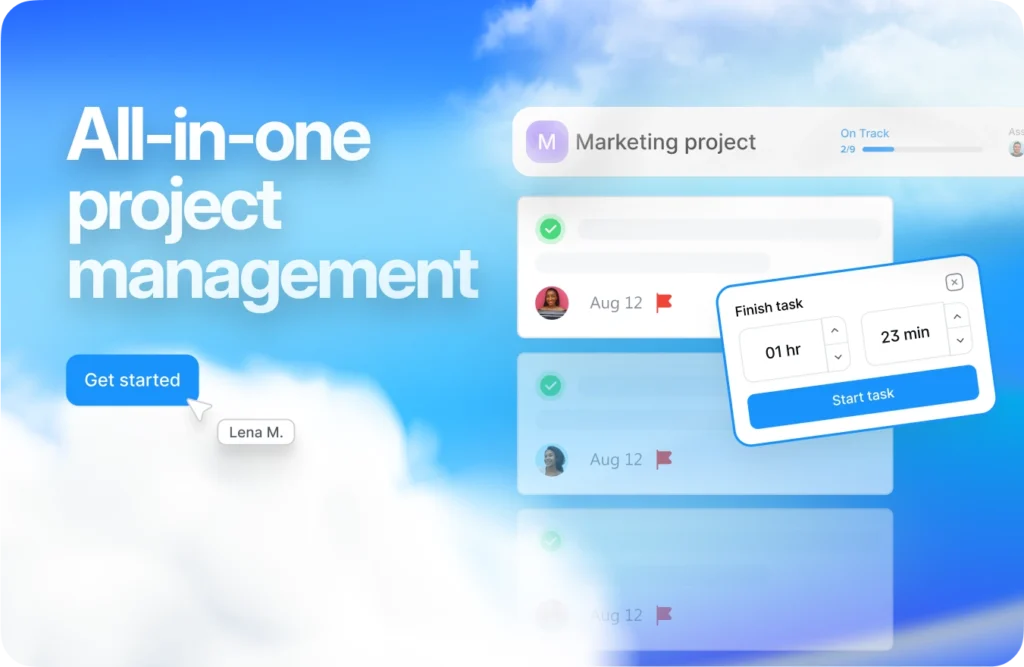5 Ways to Effectively Manage Employee Performance

Managing employee performance isn’t just about tracking results—it’s about empowering your team to grow, thrive, and contribute to organizational success. In today’s competitive landscape, businesses that prioritize performance management see greater productivity, improved morale, and sustained success. But how can leaders and managers approach this daunting yet crucial task effectively?
This article explores the significance of managing employee performance, delves into leadership’s role, highlights essential tools, and outlines actionable strategies. Whether you’re a seasoned manager or just starting, these insights will transform the way you approach performance management.
Why is it Essential to Improve Employee Performance?
Employee performance isn’t just an HR buzzword—it’s the foundation of an organization’s success. When employees perform well, businesses thrive; when they don’t, the entire system suffers.
The Ripple Effect of Employee Performance
Imagine your organization as a well-oiled machine. Each employee is a cog that drives its movement. When even one cog falters, the entire machine slows down. Improved performance ensures every team member is aligned and working efficiently, contributing to collective goals.
Benefits of Improved Performance
- Enhanced Productivity: High-performing employees complete tasks efficiently, which directly impacts team output.
- Stronger Workplace Culture: A culture of excellence fosters collaboration, innovation, and mutual respect.
- Employee Satisfaction: Employees who understand their roles and expectations are more engaged and satisfied.
Long-Term Organizational Benefits
When performance improves, turnover rates drop, customer satisfaction rises, and your company’s reputation grows. Simply put, prioritizing employee performance is investing in your organization’s future.

The Role of Leadership in Employee Performance
Great leaders don’t just manage; they inspire. Leadership plays a pivotal role in shaping employee performance and setting the tone for workplace culture.
Leadership Styles and Their Impact
Different leadership styles—from transformational to transactional—have varied impacts on performance. While some leaders inspire through vision and motivation, others rely on clear structures and rewards.
Key Leadership Practices
- Clear Communication: Employees need to know what’s expected. Leaders who communicate goals, responsibilities, and feedback foster clarity and alignment.
- Setting SMART Goals: Specific, Measurable, Achievable, Relevant, and Time-bound goals give employees a roadmap to success.
- Offering Guidance and Support: A hands-off approach may work for some, but most employees thrive under leaders who actively support their growth.
Inspiring Through Feedback and Recognition
Constructive feedback is a leader’s superpower. It highlights areas for improvement while recognizing achievements. Employees who feel valued and guided are more likely to remain loyal and perform at their best.

Tools and Technologies for Performance Management
In today’s digital era, performance management tools have revolutionized how organizations track and improve employee performance.
Popular Tools for Performance Management
- Performance Management Software: Tools like BambooHR streamline goal-setting, feedback, and tracking.
- Collaboration Platforms: Platforms like Peerbie, Slack and Microsoft Teams improve communication and collaboration, essential for team performance.
- Analytics Tools: Advanced analytics provide actionable insights into performance trends, enabling data-driven decision-making.
Benefits of Using Technology
- Real-Time Tracking: Managers can track performance metrics in real-time, identifying issues early.
- Enhanced Feedback Mechanisms: Digital tools facilitate regular feedback and evaluations.
- Scalability: Whether managing a team of 10 or 1,000, technology adapts to meet your needs.
By integrating the right tools, businesses can streamline performance management, making it more efficient and effective.
How to Measure Employee Performance?
Measuring performance is both an art and a science. While numbers tell part of the story, qualitative feedback and behavioral insights complete the picture.
Key Performance Indicators (KPIs)
KPIs are quantifiable measures that track progress toward goals. If you’re new to tracking KPIs, here’s a quick overview of how key performance indicators work in business and how to set them up for success.
- Sales Figures: For sales teams.
- Customer Satisfaction Scores (CSAT): For service teams.
- Project Completion Rates: For operations teams.
Evaluation Methods
- 360-Degree Feedback: Comprehensive reviews that include input from peers, managers, and subordinates.
- Self-Assessments: Encouraging employees to reflect on their own performance.
- Performance Reviews: Regular one-on-one sessions to discuss progress, challenges, and goals.
Overcoming Challenges in Measurement
Measurement isn’t always straightforward. Subjectivity, bias, and lack of consistent criteria can skew results. To combat this, ensure transparency, regular updates, and a balanced mix of quantitative and qualitative metrics.
Key Strategies for Managing Employee Performance
Managing performance effectively requires more than good intentions—it demands a strategic approach. Here are five proven strategies:
1. Set Clear and Achievable Goals
Employees perform best when they know exactly what is expected of them. Clear goals eliminate confusion and help team members focus on their priorities. Use the SMART criteria (Specific, Measurable, Achievable, Relevant, and Time-bound) to create actionable goals that align with organizational objectives. Regularly revisit and adjust these goals as necessary to ensure they remain relevant. When employees understand how their work contributes to the bigger picture, they feel motivated and empowered to achieve results.
2. Foster Regular Communication and Feedback
Communication is the backbone of effective performance management. Beyond words, even nonverbal communication methods like gestures can boost trust and clarity between managers and employees.Make it a point to hold regular one-on-one meetings to discuss progress, challenges, and achievements. These sessions aren’t just for managers to give feedback—they’re an opportunity for employees to voice concerns, share ideas, and feel heard. Regular communication builds trust and keeps teams aligned, while constructive feedback helps employees improve continuously. When feedback becomes a two-way street, the entire organization benefits.
3. Offer Training and Development Opportunities
Investing in employee development is an investment in the company’s future. Provide access to workshops, online courses, or in-house training sessions to enhance skills and confidence. Employees who feel supported in their growth are more likely to stay motivated and loyal to the company. Additionally, development opportunities foster innovation by empowering employees to take on new challenges and responsibilities.
4. Recognize and Reward Good Performance
Recognition is a powerful motivator. Publicly acknowledge employees’ achievements through awards, bonuses, or even a simple thank-you note. When employees know their efforts are valued, they’re more likely to maintain or exceed their performance levels. Beyond monetary rewards, non-financial incentives like extra time off or professional growth opportunities can also leave a lasting impact. A culture of recognition boosts morale and encourages healthy competition among team members.
5. Address Underperformance Constructively
Every organization faces instances of underperformance. The key is to address these situations with empathy and actionable plans. Start by identifying the root cause—is it a lack of skills, unclear expectations, or personal challenges? Work collaboratively with the employee to create a performance improvement plan, offering resources and support along the way. By addressing issues early and constructively, you can turn challenges into opportunities for growth. For workplace-specific approaches, check out effective conflict resolution techniques that help keep discussions productive and respectful.

How Peerbie Helps to Increase Employee Performance
Collaboration tools like Peerbie play a vital role in improving employee performance by fostering connectivity, transparency, and efficiency within teams. Peerbie focuses on streamlining communication and task management, enabling teams to work smarter rather than harder.
Key Features of Peerbie
1. Task Assignment and Tracking: Peerbie allows managers to assign tasks with clear deadlines, ensuring accountability and clarity. Employees can track their responsibilities in real-time, reducing miscommunication.
2. Centralized Communication: The platform acts as a hub for team collaboration, where employees can share updates, ask questions, and offer feedback, fostering a more cohesive work environment.
3. Progress Monitoring: Peerbie provides visual dashboards that track task progress, helping teams stay aligned with their goals and deadlines.
4. Employee Engagement Features: Peerbie includes tools for celebrating achievements and milestones, which boost team morale and motivation.
How Peerbie Enhances Performance
- Improved Collaboration: Teams can communicate and collaborate seamlessly, ensuring that everyone is on the same page. This minimizes delays caused by poor communication and fragmented workflows.
- Clear Priorities: By allowing employees to focus on their assigned tasks with real-time updates, Peerbie eliminates ambiguity, leading to higher efficiency.
- Recognition and Motivation: The platform’s built-in recognition tools create a culture of appreciation, encouraging employees to give their best effort.

Managing employee performance isn’t just about evaluating numbers—it’s about fostering growth, building connections, and aligning efforts with company goals. From understanding the importance of performance management to leveraging tools like Peerbie People, there are countless ways to ensure your team thrives.
Leadership plays a central role in guiding employees, while technology and clear strategies streamline the process. Whether it’s setting SMART goals, providing feedback, or recognizing achievements, effective performance management is a game-changer for any organization.
Start implementing these strategies today to see tangible improvements in your team’s morale, productivity, and success. Remember, a thriving workforce is the cornerstone of a thriving business.

